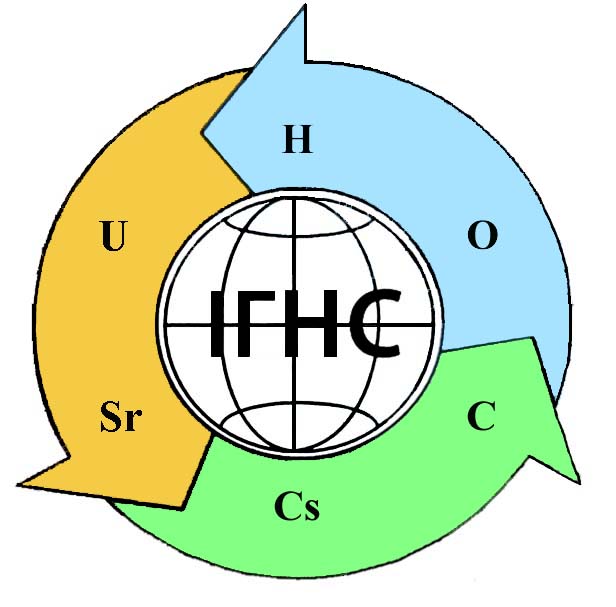RESTORATION OF WATER BODIES POLLUTED WITH REFINED PRODUCTS USING EXTENDED GRAPHITE SORBENT
DOI:
https://doi.org/10.15407/geotech2020.33.094Keywords:
absorbent, graphite, exfoliated graphite, oxidized graphite, oil, petroleum products.Abstract
The oil spill is an event of significant environmental and social risks and therefore requires prompt action in an emergency. The choice of measures to neutralize the spill occurs in a stressful state of emergency, at the same timeneed to ensure the effectiveness of the developed measures, as there is always a risk that non-compliance with measures can only worsen the situation. Usually in such conditions are based on previous experience, which is now known to prove the effectiveness of the use of sorption technologies, which are used as oil sorbents – super hydrophobic and super lyophilic materials. Carbon-based absorbents in the form of expanded / expanded / exfoliated graphite are considered to be one of the best candidates for this role. This decision is due to its significant, compared to other absorbents capacity for oil and petroleum products and relatively low cost, which makes it possible to use in spill areas of tens and hundreds of square kilometers. Accordingly, the development of an affordable mobile system for the industrial production of this absorbent capable of synthesizing it directly at the accident site is an urgent task. We have created a compact system that is able to stably synthesize exfoliated graphite by thermal shock. This system together with the power generator is placed directly in the minibus and the production of exfoliated graphite can be very quickly deployed directly at the site of an emergency oil spill or petroleum products. The need for system mobility is due to the wide geographical coverage and terminals, as well as oil storage facilities. That is, it is almost all regions of Ukraine and the world, which once again confirms the need for mobile generation of this absorbent with significant selectivity, especially for heavy brands of oil and petroleum products.
References
Mishra S. The emergence of nanotechnology in mitigating petroleum oil spills. Marine Pollution Bulletin. 2022. Vol. 178. P. 113609.
Oliver’s Yard Применение сорбентов при ликвидации разливов нефти. London : ITOPF, 2012. 12 с.
Inagaki M. Carbon materials for spilled-oil recovery. M. Inagaki, F. Kang, M. Toyoda, H. Konno. Advanced Materials Science and Engineering of Carbon. Elsevier, 2014. P. 313–334.
Inagaki M. Exfoliated graphite for spilled heavy oil recovery. 2001. Vol. 2, № 1. P. 8.
Rajakovic V. Efficiency of oil removal from real wastewater with different sorbent materials. Journal of Hazardous Materials. 2007. Vol. 143, № 1–2. P. 494–499.
Hou S. Exfoliated graphite blocks with resilience prepared by room temperature exfoliation and their application for oil-water separation. Journal of Hazardous Materials. 2022. Vol. 424. P. 127724.
Kang F. Effect of preparation conditions on the characteristics of exfoliated graphite. Carbon. 2002. Vol. 40, № 9. P. 1575–1581.
Piperopoulos E. Carbon-based sponges for oil spill recovery. E. Piperopoulos, L. Calabrese, E. Mastronardo, [et al.]. Carbon Nanomaterials for Agri-Food and Environmental Applications. Elsevier, 2020. P. 155–175.
Ambika S. Eco-safe chemicothermal conversion of industrial graphite waste to exfoliated graphene and evaluation as engineered adsorbent to remove toxic textile dyes. Environmental Advances. 2021. Vol. 4. P. 100072.
Toyoda M. Sorption and recovery of heavy oils by using exfoliated graphite. Spill Science&Technology Bulletin. 2003. Vol. 8, № 5–6. P. 467–474.
Inagaki M. Recovery of heavy oil from contaminated sand by using exfoliated graphite. Desalination. 2004. Vol. 170, № 1. P. 77–82.
Olga V. R. Cleanup of water surface from oil spills using natural sorbent materials. Procedia Chemistry. 2014. Vol. 10. P. 145–150.
Inagaki M. Carbon materials in photocatalysis. M. Inagaki, F. Kang, M. Toyoda, H. Konno. Advanced Materials Scienceand Engineeringof Carbon. Elsevier, 2014. P. 289–311.
Hou S. Environment-friendly preparation of exfoliated graphite and functional graphite sheets. Journal of Materiomics. 2021. Vol. 7, № 1. P. 136–145.
Sykam N. Highly efficient removal of toxic organic dyes, chemical solvents and oils by mesoporous exfoliated graphite: synthesis and mechanism. Journal of Water Process Engineering. 2018. Vol. 25. P. 128–137.
Sykam N. Rapid synthesis of exfoliated graphite by microwave irradiation and oil sorption studies. Materials Letters. 2014. Vol. 117. P. 150–152.
Mendoza-Duarte J. M. Exfoliated graphite preparation based on an eco-friendly mechanochemical route. Journal of Environmental Chemical Engineering. 2020. Vol. 8, № 5. P. 104370.
Chai L. A new strategy for the efficient exfoliation of graphite into graphene. New Carbon Materials. 2021. Vol. 36, № 6. P. 1179–1186.
Manning T. J. Synthesis of exfoliated graphite from fluorinated graphite using an atmospheric-pressure argon plasma. Carbon. 1999. Vol. 37, № 7. P. 1159–1164.
Пат. 47966 A Київ, Спосіб одержання розширеного графіту і пристрій для його здійснення В.П. Кисельов, Ю. В. Кисельов, В. В. Гоцуленко; дійсний з 15.07.02.









